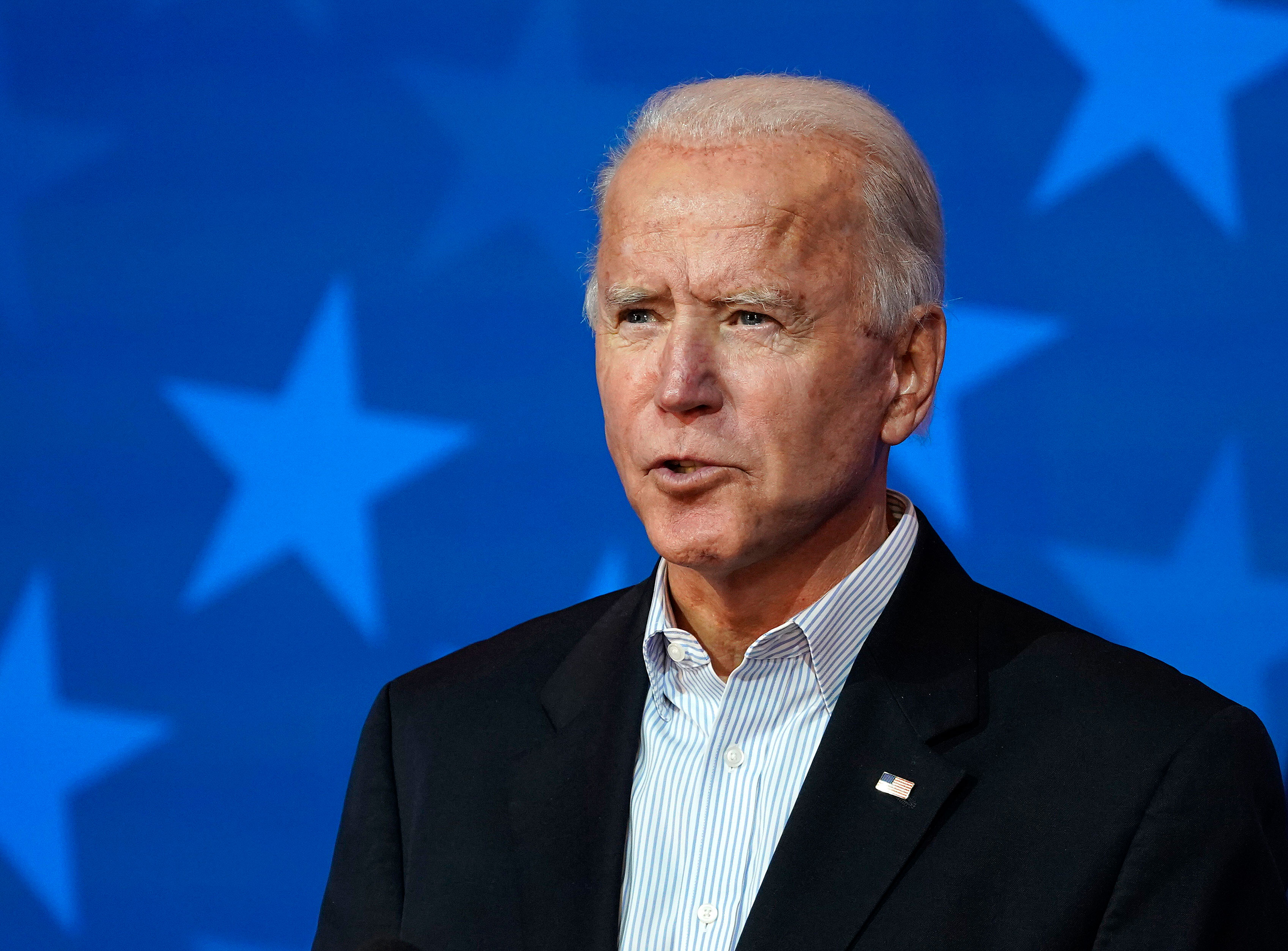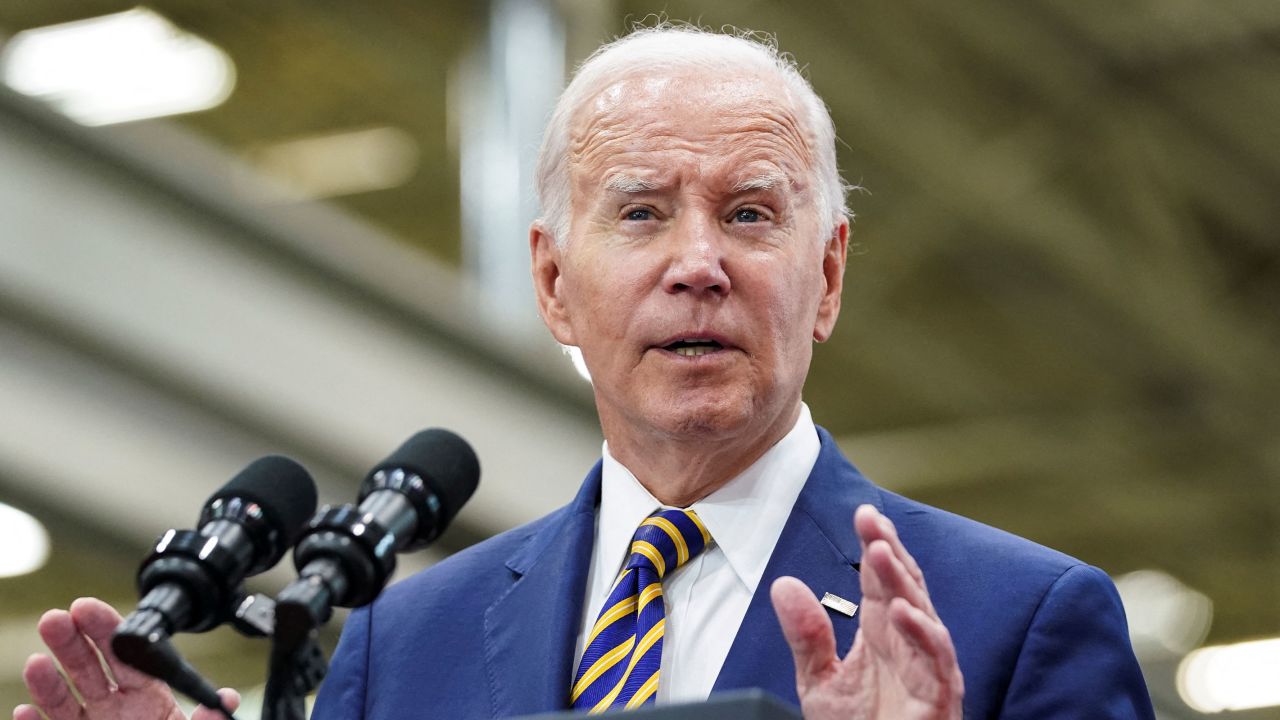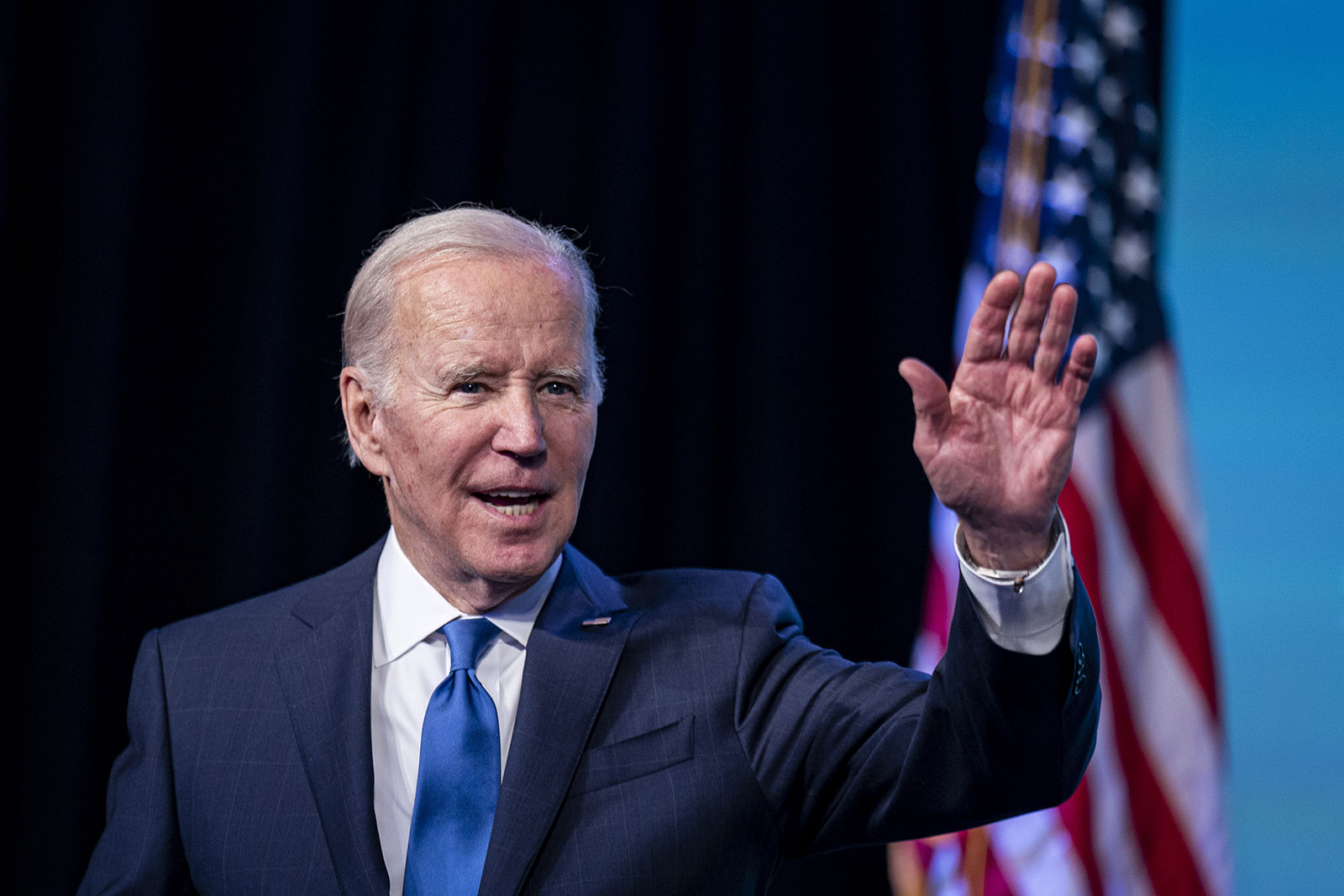Biden Gatorade - Unpacking Public Perceptions
There's a lot of chatter these days about what goes on behind the scenes, especially when it comes to people in very public roles. It's almost like everyone has a front-row seat to the daily lives of those who lead us, and with that, comes a lot of looking at the little things, the nuances, the moments that might otherwise pass by unnoticed. People, you know, are pretty good at picking up on vibes, and sometimes, those vibes spark some pretty interesting conversations among folks just trying to make sense of it all.
When you see someone out and about, maybe even just casually holding a biden gatorade, it naturally gets people thinking about their energy levels or how they are presenting themselves. This kind of public observation, really, often leads to bigger questions about what's happening away from the cameras. It's not about being nosey, necessarily, but more about trying to piece together the full picture of someone who holds a lot of responsibility, especially when certain details begin to emerge that raise an eyebrow or two.
So, we're going to take a closer look at some of those observations and discussions that have been floating around. We'll explore the various bits and pieces that have come into the public eye, shaping how some people view certain situations. It’s about trying to get a handle on the narrative, you know, and how different aspects of a public figure’s life get talked about and understood by a lot of different people.
- Berta Alan Hattel
- Jamie Oliver Public Figure Latest
- Liza Huber
- Teach Me First Honey Toon Free
- Real Carly Jane Real Name
Table of Contents
- A Look at the Person Behind the Headlines
- Were Decisions Made with a Clear Mind?
- Health Matters - What Was Said and What Was Seen?
- Campaign Style and Public Sightings
- Who Was Really Guiding the Ship?
- Private Matters, Public Scrutiny
- Bringing it All Together
A Look at the Person Behind the Headlines
When we talk about public figures, it's pretty common for people to be interested in the details of their life. It's not just about what they do in their official capacity, but also about the personal aspects that shape who they are and how they approach their work. You know, everyone has a story, and for someone like Joe Biden, that story has unfolded very much in the public eye for a long, long time, which naturally invites a lot of observation and discussion about him as a person.
His journey through public service has been quite a long one, so there's a lot of history there for people to consider. From his early days in the Senate to his time as Vice President and then to the highest office, people have had many opportunities to see him in different roles and under different kinds of pressure. This long presence in the public view, I mean, means that there's a deep well of experiences that people draw from when they form their opinions or ask questions about his actions and his health.
It's fair to say that the way a person presents themselves, or even how they are perceived to be feeling on a given day, can really shape public sentiment. Whether it's a moment of clarity or a perceived stumble, these things become part of the ongoing narrative that surrounds someone in a position of power. This public gaze, actually, means that even small details can become quite significant in the broader conversation about their fitness and ability to lead.
- Dion Phaneuf Children
- Roblox Dashboard
- Carly Jane Bra Size
- Christopher Reeve And Keanu Reeves Related
- Carly Jane Bio
Joe Biden's Details
| Full Name | Joseph Robinette Biden Jr. |
| Birth Year | 1942 |
| Public Service Began | 1973 (U.S. Senate) |
| Vice President | 2009-2017 |
| President | 2021-Present |
Were Decisions Made with a Clear Mind?
One of the big questions that sometimes comes up when we talk about leaders, especially those in very demanding roles, has to do with their state of mind when important decisions are being made. It's a pretty serious consideration, you know, because the choices made by someone in a position of great power can have very wide-reaching effects on a lot of people. So, naturally, there's a lot of public interest in whether a leader is fully present and sharp when they are doing their job.
The idea of a leader's capacity to govern is something that people talk about quite a bit, especially when there are discussions about their overall well-being. It’s not just about making the right choices, but also about the process behind those choices, and whether the person at the helm is truly in command of their faculties. This kind of inquiry, in a way, often arises when there are public moments or reports that suggest a leader might be less than completely on top of things, leading to broader speculation.
So, when certain pieces of information become public, or when observations are made about a leader's behavior, it can definitely spark a lot of conversation about their ability to handle the immense pressures of their role. People want to feel confident that the person guiding the country is fully capable, and any hint otherwise, well, it understandably gets people talking and asking questions about what's really going on behind the scenes.
The Question of Presidential Authority and Pardons
There's been some talk, you know, about whether certain actions, like a president's final pardons, could face challenges later on. This comes up especially if there are discussions around whether the president making those decisions was fully, you know, in their right mind at the time. It's a pretty interesting legal and public policy question, because the authority of the office is something that needs to be absolutely clear and beyond doubt for things to hold up.
The core idea here is about the mental state of the person in charge when they exercise such a significant power. If there's a perception, or even a suggestion, that a president was not completely compos mentis, as the saying goes, it could potentially open up a whole can of worms for decisions made during that period. This kind of discussion, naturally, highlights how important it is for the public to feel assured about the leader's mental sharpness when they are performing their duties, particularly those with lasting consequences.
So, the question isn't just about the pardons themselves, but about the underlying capacity of the person who issued them. It brings into focus the immense trust placed in a president and the expectation that they are always operating with full clarity. This is, you know, a very serious point of discussion because it touches on the very foundation of how power is exercised and accepted in a democracy.
The Hur Report and What it Suggested About biden gatorade Moments
A big part of this conversation, it seems, has centered around what's been called the Hur report. This document, apparently, brought some of these concerns about a leader's mental state right into the public view. It suggested, or at least presented information, that led some to question the president's memory and overall cognitive sharpness, which, you know, really got people talking.
The way this report was discussed, it made some people think that all a prosecutor might need to do to challenge certain actions is to, basically, replay the Hur interviews or findings. It's like, if there are moments captured in those recordings or documents that show a leader struggling with recall or appearing a bit confused, then those moments could become central to arguments about their capacity. This really puts a spotlight on how public records can influence perceptions, especially concerning something as seemingly simple as a casual biden gatorade moment, which might be interpreted through the lens of overall vitality.
So, the report, in a way, became a focal point for these broader discussions about the president's mental capacity. It seemed to suggest that there were moments where his memory was not completely reliable, and this, naturally, fueled a lot of the public debate and concern. It’s pretty clear that these kinds of reports, actually, can have a significant impact on how people view a leader's fitness for their very demanding role.
Health Matters - What Was Said and What Was Seen?
When it comes to people in very high-profile positions, their health is often a subject of intense public interest. It's not just about privacy, but also about the idea that a leader needs to be physically and mentally able to handle the tremendous demands of their job. So, what's said about their health, and what's actually seen by the public, can sometimes create a bit of a disconnect, leading to a lot of speculation and discussion. This is, you know, a pretty common thing when public figures are involved.
There's a natural curiosity, really, about how a leader is feeling, especially when they are making important decisions that affect everyone. Any health announcement, or even a perceived change in their physical presentation, can become a big topic of conversation. People tend to watch closely, and they compare what they hear with what they observe, which can sometimes lead to different interpretations of the same information. It's like, you know, everyone has their own lens through which they view these things.
So, the way health information is communicated, and how it's received by the public, plays a pretty big part in shaping overall perceptions. It's about transparency, sure, but also about how the public interprets those signals, whether it's an official statement or just a fleeting glimpse of a public figure. This kind of scrutiny, obviously, means that health matters are rarely just private affairs for those in the highest offices.
The Cancer Announcement and Public Interpretations
Back in 2022, there was a public statement about the president having cancer, which, you know, is a pretty serious piece of news for anyone. However, what happened next, apparently, was that the media and the White House quickly presented it in a way that spun it as skin cancer. This kind of rapid framing, actually, immediately led to questions about the full picture of the president's health.
It's like, when a significant health issue is mentioned, people expect a certain level of straightforwardness. But if the information then gets immediately qualified or reframed, it can leave some people wondering if they're getting the whole story. This sort of quick clarification, or perhaps, a downplaying of the initial statement, can sometimes make people even more curious, rather than less, about the true nature of the health concern. It really is a delicate balance when communicating such personal information in a public role.
So, the way this particular health announcement was handled, and the subsequent efforts to clarify it, became a point of discussion in itself. It highlights how public figures' health issues are not just medical facts, but also part of a broader narrative that gets shaped and interpreted by various sources. This, you know, can definitely influence how the public perceives the leader's overall condition and capacity.
Medical Views and the Discussion Around biden gatorade
Adding another layer to the health conversation, apparently, many medical professionals have been weighing in on the kind of prostate cancer that was mentioned in connection with the president. Their insights, you know, often bring a more detailed and clinical perspective to what might otherwise be a very general public discussion. This kind of expert input can sometimes either confirm or challenge the prevailing public narrative about a leader's health.
When medical experts speak up, it can sometimes raise different questions or provide a more nuanced view than what the general public might be hearing. For example, the specific type of cancer, and what that might mean for a person of a certain age, could lead to different interpretations than a more generic "skin cancer" announcement. This kind of expert commentary, obviously, adds another dimension to the ongoing public discussion about a leader's overall well-being, even down to how much energy they might have for, say, a casual biden gatorade moment.
So, the input from these medical professionals has, in a way, contributed to the ongoing public conversation about the president's health. It means that the discussion isn't just about what's officially stated, but also about the various professional interpretations that circulate. This really shows how different voices can shape the broader understanding of a public figure's physical condition.
Campaign Style and Public Sightings
Campaigns are usually pretty active, with candidates out and about, meeting people and making their case directly. But sometimes, a campaign takes a different approach, and that can really get people talking. When a candidate isn't seen as much on the campaign trail, or when their public interactions are somewhat limited, it naturally raises questions about their strategy, their energy, or even their overall approach to connecting with voters. It's, you know, a pretty noticeable shift from the usual way of doing things.
The public, in general, expects to see candidates out there, shaking hands, giving speeches, and showing a lot of vigor. So, when that's not happening as much, or when appearances seem to be carefully managed, it can create a certain kind of perception. People start to wonder why things are being done a certain way, and what that might say about the candidate or the campaign's confidence. This kind of controlled public presence, actually, often becomes a topic of discussion in itself, regardless of the reasons behind it.
So, the style of a campaign, especially how much a candidate is seen in public, is something that gets a lot of attention. It's about more than just strategy; it's about the signals that are sent to the voters about a candidate's readiness and ability to engage. This, basically, contributes to the overall public image and how a candidate is perceived by a lot of different people.
Running a Campaign from the Basement
There was a period where the campaign was, apparently, largely run by surrogates, while the candidate himself stayed pretty sheltered, described as being in his Delaware basement. This approach, you know, was quite different from what people usually expect from a presidential campaign, where the candidate is typically front and center, constantly traveling and holding events. It definitely stood out as an unusual way to conduct such a high-stakes effort.
When a campaign relies so heavily on others to carry the message, and the main person stays out of the direct public eye, it can lead to a lot of speculation. People might wonder about the reasons behind such a strategy – whether it's about health, or a deliberate tactical choice, or something else entirely. This kind of low-profile campaigning, really, can shape how the public perceives the candidate's energy and their willingness to engage directly with the rigors of the election process. It's pretty much a departure from the traditional model.
So, the idea of a campaign being run from a relatively secluded location, with limited direct public appearances by the candidate, became a significant part of the narrative. It raised questions about the candidate's stamina and their overall approach to winning over voters. This, naturally, was a big talking point during that time, influencing how people viewed the entire campaign effort.
Public Appearances and the biden gatorade Effect
Occasionally, the candidate did venture out into public, but these interactions were, apparently, very tightly controlled. This means they weren't the usual spontaneous, free-flowing events that people often associate with political campaigning. Instead, they seemed to be carefully managed, with limited opportunities for unscripted moments or extended public engagement. This, obviously, made people pay even closer attention to those rare public sightings.
When public appearances are so carefully orchestrated, it can sometimes create a sense that something is being managed or protected. People might notice the lack of casual interactions, or the brevity of the engagements, and this can lead to various interpretations about the candidate's comfort level or their overall capacity. It's like, you know, every movement and every word becomes a focal point when there are so few opportunities to see them in a more natural setting, almost like observing someone simply enjoying a biden gatorade on a quiet afternoon, but with immense public scrutiny.
So, the nature of these occasional public appearances, and the way they were tightly managed, became a point of discussion in itself. It contributed to the overall public perception of the candidate's energy and their ability to connect directly with the electorate. This, basically, added another layer to the ongoing conversation about their public presence and what it might signify.
Who Was Really Guiding the Ship?
In any big organization, especially one as
- Onlyfans Gloria Torres Of
- Roblox Dashboard
- Hattel
- Openai Chatgpt Plus Subscription Iran
- Somali Hub Telegram

Joe Biden poised to quickly move to announce more pieces of transition

First on CNN: Biden wades into GOP primary with $25 million ad blitz

Biden is tied for second-lowest approval rating of any president in the